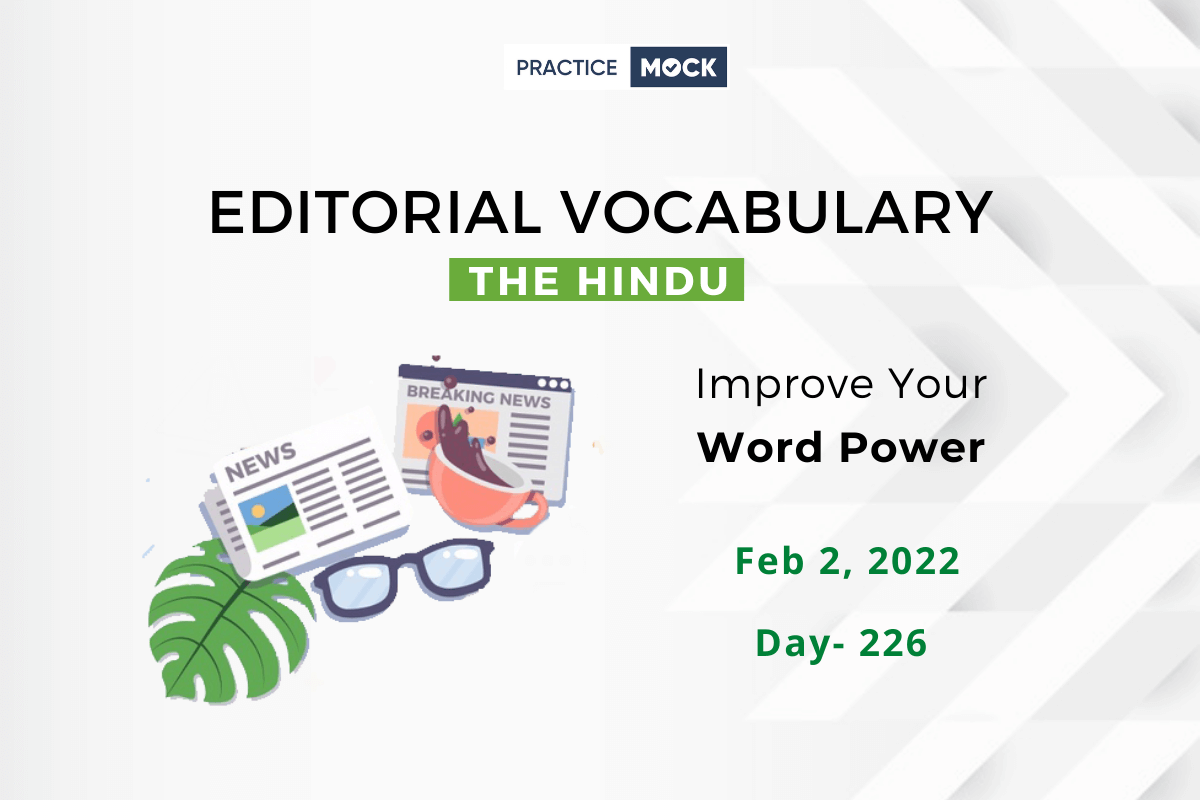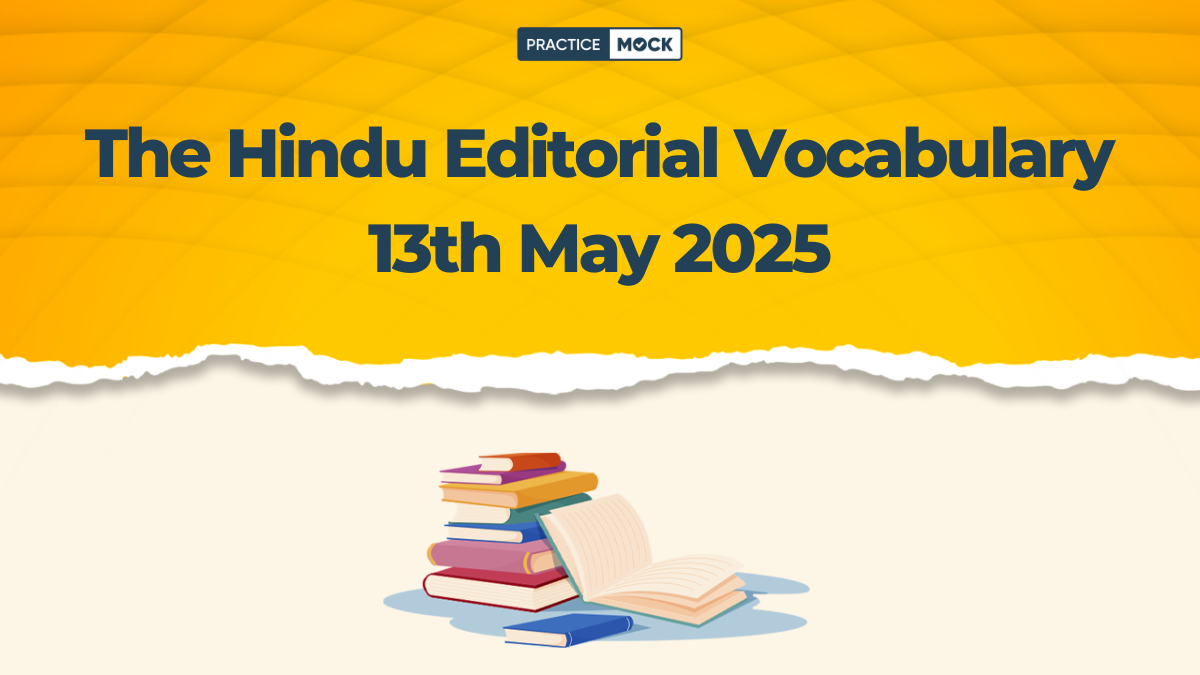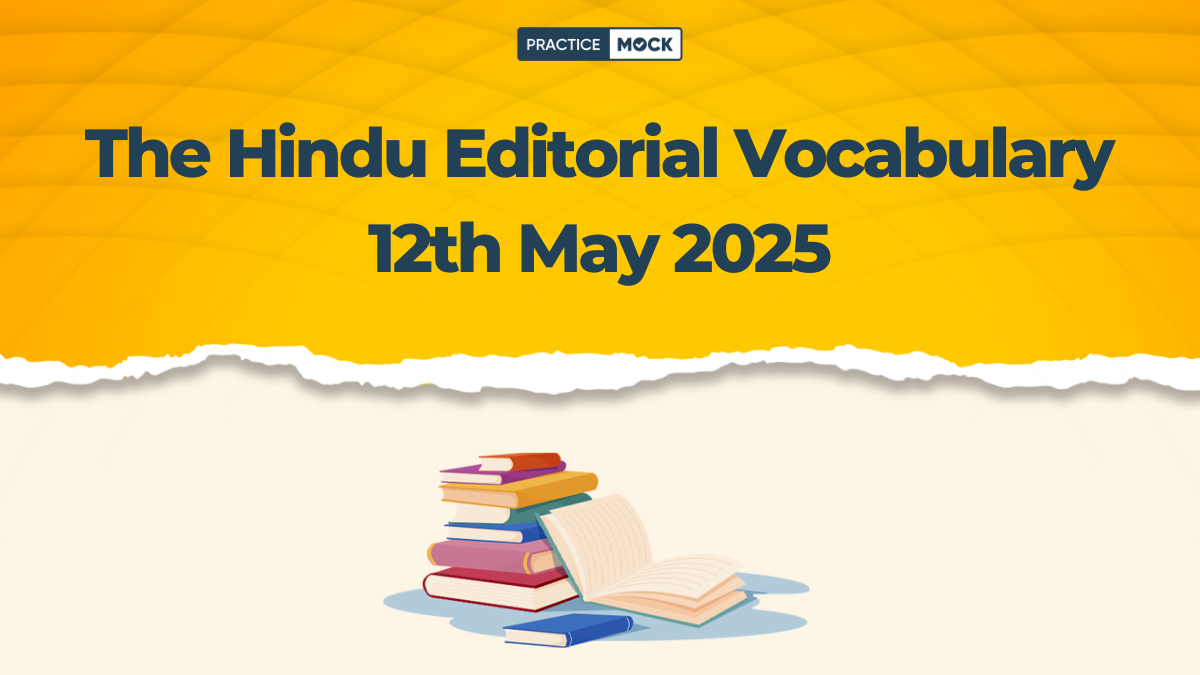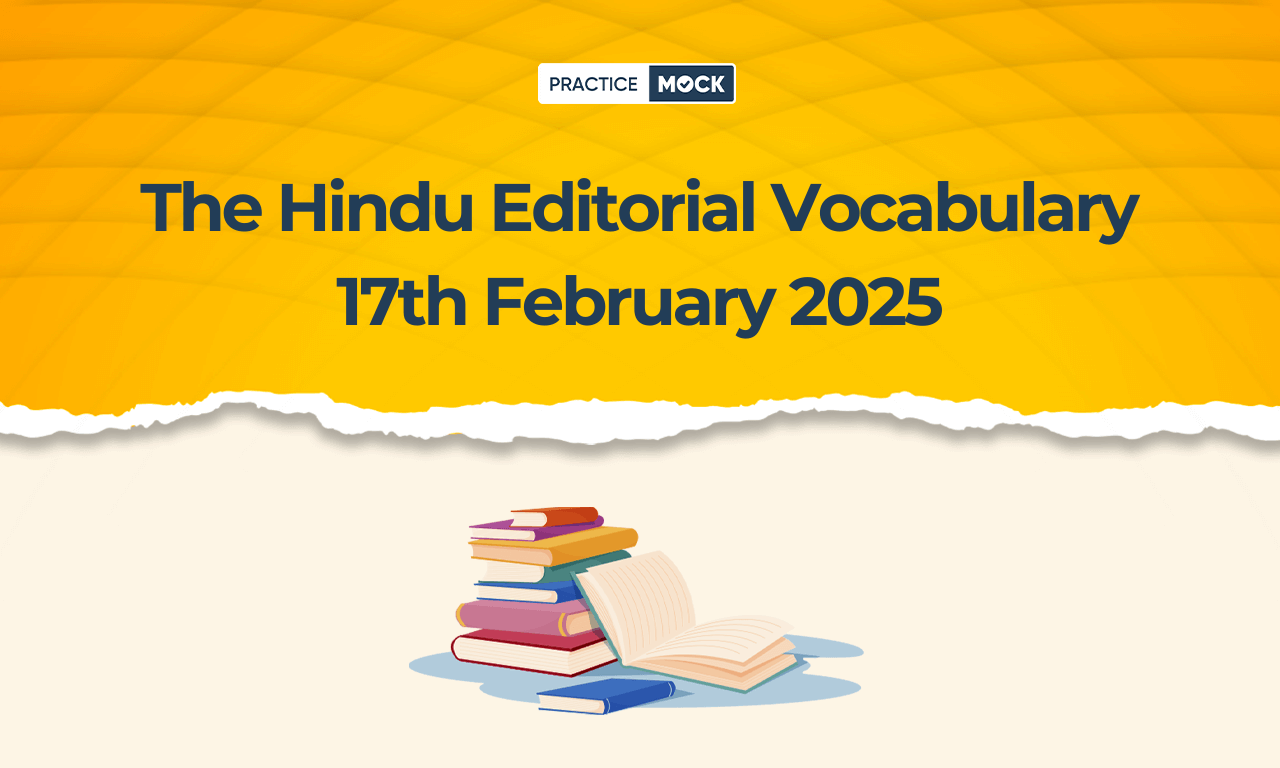

| Difficult Word/ Phrase | Contextual Sense |
| Invigorating | making somebody feel healthy and full of energy |
| Commonsensical | Exhibiting native good judgment |
| Bubble | to have a lot of a particular quality, especially excitement or enthusiasm: |
| Entrench | to place (someone or something) in a very strong position that cannot easily be changed |
| Flagging | to become weak |
| Pump-prime | stimulate activity in (an economy) by investment |
| Pencil in | arrange, forecast, or note down something provisionally or tentatively |
| Multimodal | characterized by several different modes of activity or occurrence |
| Solace | The comfort you feel when consoled in times of disappointment |
| Exacerbate | Make worse |
Big on hopes, short on ideas: On Union Budget 2022-23
The Budget aims to focus on infrastructure and connectivity, but lacks growth-invigorating (making somebody feel healthy and full of energy) proposals
Finance Minister Nirmala Sitharaman’s fourth successive budget, while commonsensical (Exhibiting native good judgment) in its approach, is not exactly bubbling (to have a lot of a particular quality, especially excitement or enthusiasm:) with new ideas. With the economy still in search of durable momentum that could help entrench (to place (someone or something) in a very strong position that cannot easily be changed) the recovery from the last fiscal year’s record contraction, Ms. Sitharaman has missed an opportunity to address the flagging (to become weak) consumer spending in the wake of erosion in real incomes and savings through a combination of tax breaks for the middle class and cash handouts for the poor. And even as the Minister acknowledges the role public capital expenditure could play in crowding-in private investment at a time when “private investments seem to require that support” and help to ‘pump-prime (stimulate activity in (an economy) by investment.)’ demand in the economy, the Budget outlay of ₹7.50 lakh-crore for the capital account marks just a 24.4% increase from the revised estimate of ₹6.03 lakh-crore for the current fiscal. To be sure, Ms. Sitharaman’s speech highlights the PM GatiShakti, a “transformative approach for economic growth and sustainable development” that is to be powered by the ‘seven engines’ of roads, railways, airports, ports, mass transport, waterways, and logistics infrastructure. While the broad sweep of the public infrastructure envisioned by the programme could potentially be truly transformative if it were to be executed as imagined, the Budget is largely short on details where it concerns the specifics and pencils in (arrange, forecast, or note down something provisionally or tentatively) some figures only for the roads and railways components. The Budget lists a ‘Master Plan for Expressways’ that will be formulated in 2022-23 under the scheme and projects the addition of 25,000 kilometres of roads to the National Highways network. The talk of enabling seamless multimodal movement of goods and people and providing multimodal (characterized by several different modes of activity or occurrence) connectivity between mass urban transit systems and railway stations, however, all sound a familiar refrain from past speeches.
Spending outlays on several other key sectors including health care, rural development and the vital jobs and income providing national rural employment guarantee scheme have all shrunk as a percentage of overall expenditure in the Budget estimates for fiscal 2023 from the revised estimates for the current year, even if in some cases only marginally. That these sectors have been forced to bear the impact of the Government’s keenness to broadly stick to a fiscal consolidation road map — with the Budget projecting a narrowing of the fiscal deficit to 6.4% of GDP in 2022-23, from a revised estimate for 6.9% — reflects on its priorities. Government spending on health care ought to have instead been significantly increased, with the lessons from the ongoing pandemic’s first two waves serving to illuminate the need for a sizeable enlargement of the public health infrastructure. A source of some solace (The comfort you feel when consoled in times of disappointment), though, is the announcement of a ‘National Tele Mental Health Programme’ to address mental health problems that have been exacerbated (Make worse) by the claustrophobic lockdowns and plethora of anxieties triggered by the pandemic.
Want to improve your vocabulary further? Download the Lists of Word-Meanings of Previous Months here.
Recent Posts
IBPS RRB Notification 2025 in June, PO & Clerk Exam Date Out, Check All Upcoming Events
The IBPS RRB Notification 2025 is expected to be released in June 2025. Candidates can…
IBPS RRB PO Prelims Mock Test Free 2025, Attempt Now!
Here we are providing the IBPS RRB PO Prelims Mock Test Free 2025. Candidates can…
UPSC Admit Card 2025 Out for Prelims, Get Direct Link
The UPSC has released the UPSC Admit Card 2025 for Prelims exam. In this blog,…
How to Crack RBI Grade B in First Attempt?
Aspirants preparing for RBI Grade B exam. Know the 10 tips to crack RBI 2025…
IBPS PO vs RRB PO, Which Exam is Easier to Crack?
IBPS PO or RRB PO? Compare difficulty, pattern, and job roles to choose the best…
How to Master Government Schemes for RBI Grade B Exam
Master government schemes effectively for the RBI Grade B exam with comprlete strategies, Important resources…


